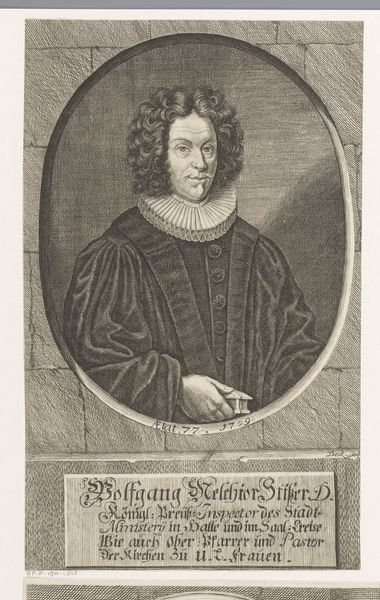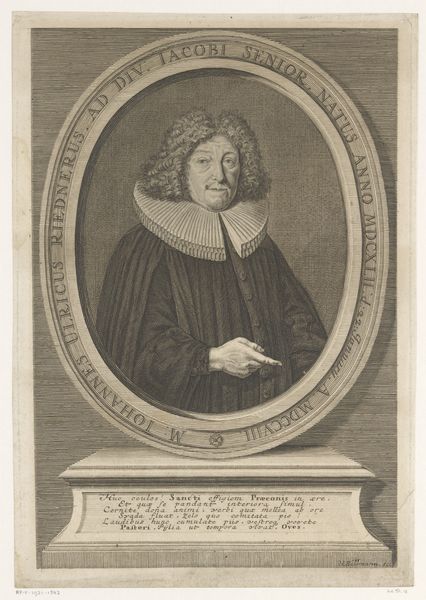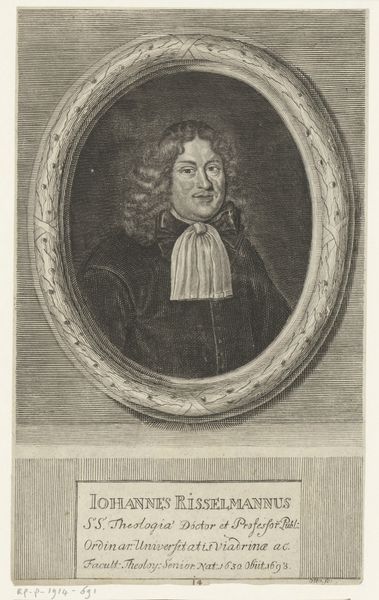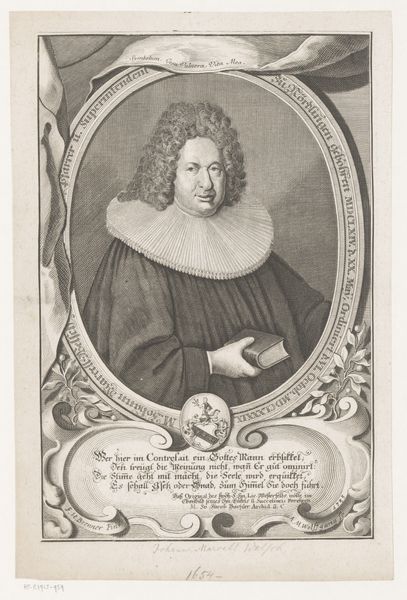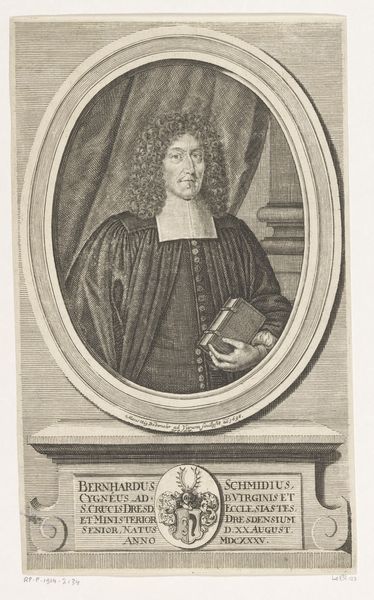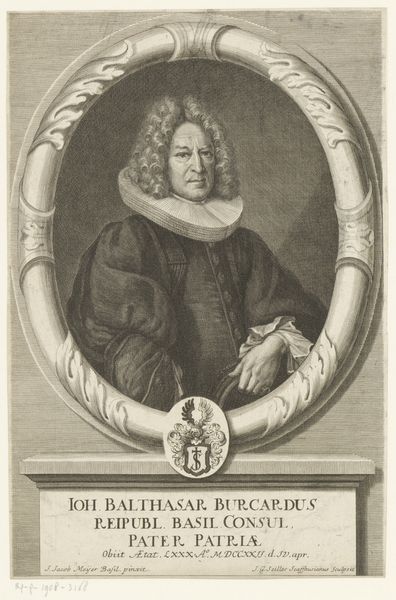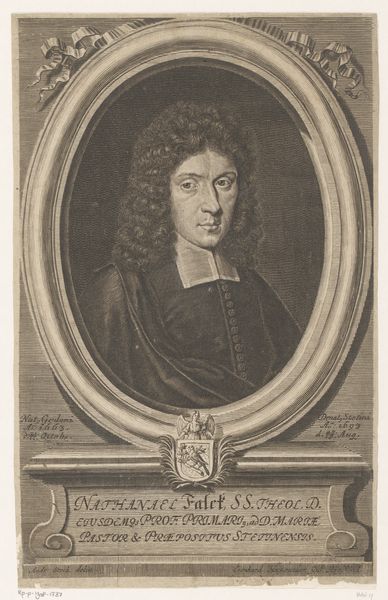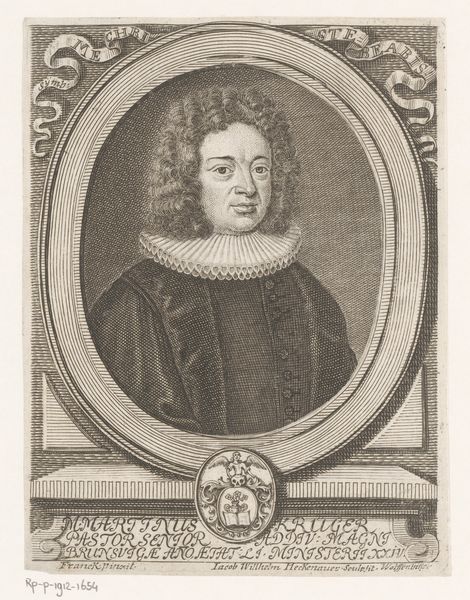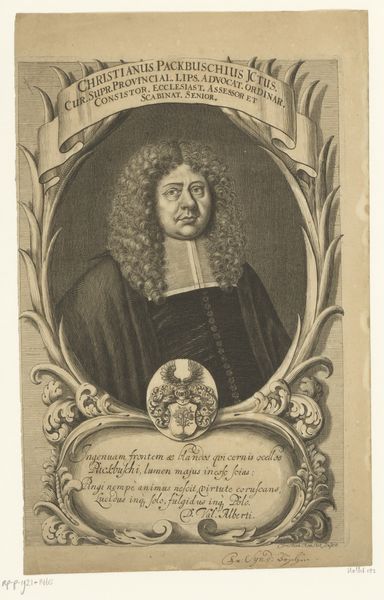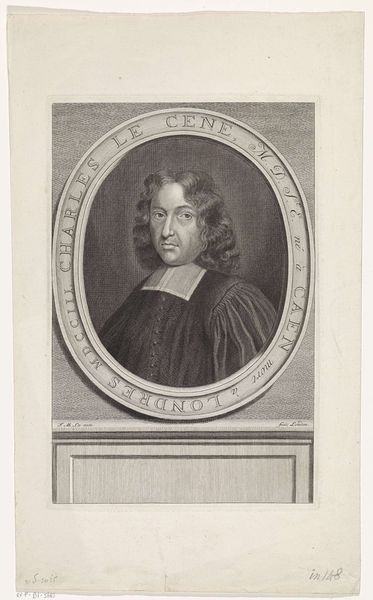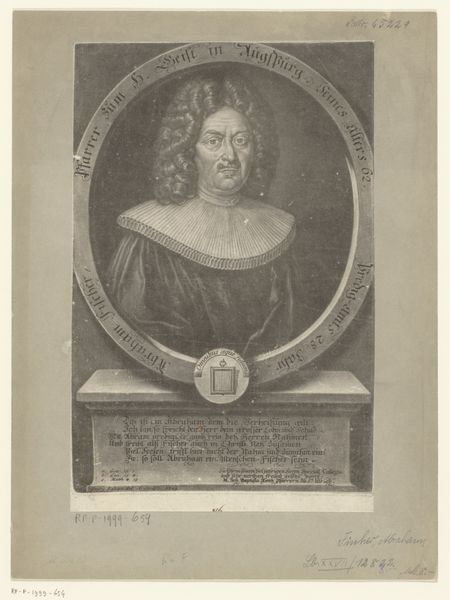
print, engraving
#
portrait
#
baroque
# print
#
old engraving style
#
engraving
Dimensions: height 370 mm, width 265 mm
Copyright: Rijks Museum: Open Domain
Curator: Looking at this print, titled "Portret van Johann Andreas Kunad," produced sometime between 1665 and 1721 by Christian Romstet, my first impression is one of profound stillness. There’s a gravitas about him. Editor: The detailed rendering of this Baroque engraving provides an insight into the status and craft involved in reproducing an image in this era. Consider the material processes, the use of copper or steel plates to create these images, which allowed for dissemination and the building of public personas. Curator: Exactly. You notice the oval frame embellished with text – what seems to be a dedication around Kunad's portrait. His identity is announced within the wreath, lending him institutional authority as a S.S. Theol. Doctor. Editor: And let’s also notice how the proliferation of prints like this, circulated within networks, shaped perceptions and ideologies in burgeoning public spheres, especially around religious figures such as Kunad. This allowed the expansion of a political agenda around him. Curator: What do you think the coat-of-arms positioned beneath the portrait alludes to? And consider the phrase ‘Libens Morior’... could be symbolic of embracing death... an interesting contemplation on religious doctrine. Editor: Yes, perhaps related to notions of salvation and duty within societal frameworks... and how imagery was used to cultivate public emotion... think about how this portrait functions within larger visual cultures of death and commemoration during that period... who was controlling its use and to what end? Curator: Considering all of this, this piece is very effective in the ways that it melds image, text and social framework. The act of replication enabled by engraving is very democratic, too. Editor: Absolutely, from the process of etching to the role of image production within social, political and even religious spheres, a great deal can be appreciated through the details, bringing context to the visual display here.
Comments
No comments
Be the first to comment and join the conversation on the ultimate creative platform.
